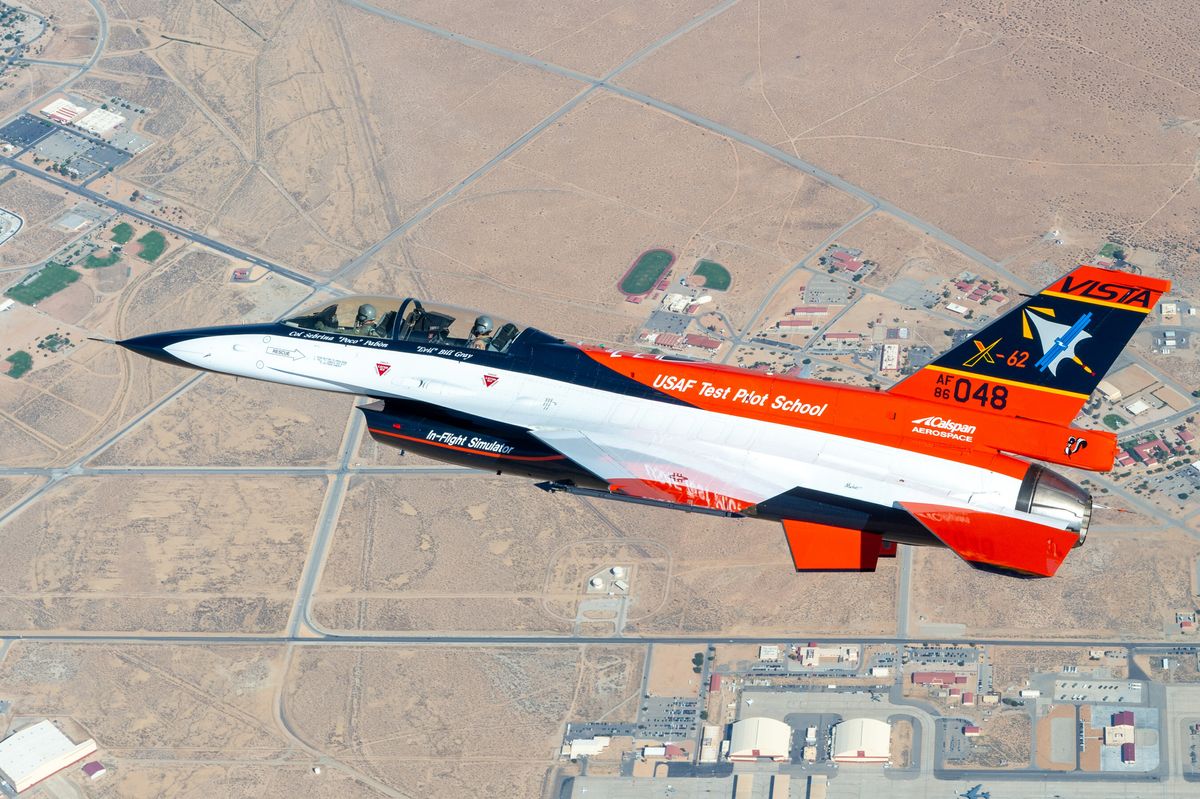AI Just Flew an F-16 for 17 Hours. This Could Change Everything.
It’s a huge step forward for the fighters of the future.
- Artificial intelligence software flew the VISTA X-62A for more than 17 hours, marking the first time AI operated a tactical aircraft.
- The VISTA is a training aircraft based on the F-16.
- Next-generation fighter jets are expected to fly with the assistance of AI.
Move over, Maverick: artificial intelligence (AI) may soon be the next hot fighter jock in the skies.
An AI agent recently flew Lockheed Martin’s VISTA X-62A for more than 17 hours at the U.S. Air Force Test Pilot School (USAF TPS) at Edwards Air Force Base in California—the first time AI was used on a tactical aircraft. The experimental training aircraft is expected to lay the groundwork for a coming wave of jets piloted entirely by computers.
The VISTA, developed by Lockheed’s Skunk Works and Calspan Corporation, is fitted with software that allows it to mimic the performance characteristics of other aircraft. The test plane is a modified F-16D Block 30 Peace Marble Il aircraft upgraded with Block 40 avionics.
Artificial intelligence pilots Air Force fighter jet in successful California test
EDWARDS AIR FORCE BASE, Calif. (KABC) — Will Maverick from “Top Gun” be obsolete one day?
The U.S. Defense Department is disclosing that A.I. programs successfully made a dozen test flights in an F-16 over the California desert.
The flights in early December included advanced fighter maneuvers simulating combat, also known as dogfighting.
The jet stayed in the air for more than 17 hours during the flights at Edwards Air Force Base.
The flights demonstrated that A.I. agents can control a full-scale fighter jet and provided invaluable live-flight data.
The goal of the program is to develop an A.I. autopilot system that can navigate, fly, collect intelligence and even engage in combat.
The Defense Department has been working on the A.I. program since 2019 and has run dogfights with simulators in which the computer defeated a human pilot.
Testing and research in the program is continuing before it will be put into real-world use. source

